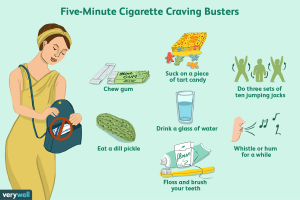
Tobacco use is a leading cause of death all over the world. Its consumption, both in the smoke and the smokeless form is a major threat to the global population. In India, it is consumed in both the forms and its prevalence varies from 57% male population to about 10.6% female population.
| SMOKED FORM | SMOKELESS FORM | TOBACCO FOR APPLICATION |
| Bidis | Paan (Betel Quid) | Tobacco water |
| Cigarettes | Mawa | Mishri |
| Cigars | Khan | Gul |
| Pipe | Zarda | Bajjar |
| Hookah | Mainpuri | Gudhaku |
Tobacco smoke contains about 4000 chemical compounds including tar, carbon monoxide, nicotine, hydrogen cyanide, acetone, ammonia, arsenic, phenol, naphthalene, cadmium and polyvinyl chloride. 43 of these compounds are potential carcinogens and pose a serious risk for health. Nicotine in the tobacco is a highly addictive substance, which is why, tobacco users find it difficult to quit. Overtime, users become dependent on nicotine and sudden stopping produces both, physical and phycological withdrawal symptoms.

Quitting tobacco is not an easy task, however, its not not doable as well. The five As (Ask, Advice, Assess, Assist and Arrange) is a 5-15 min research based counselling approach that has proven successful all over the world.
ASK: The objective is to identify the tobacco users and motivate in them the want to quit tobacco.
ADVICE: This step involves a strong, clear and familial message to quit tobacco. The approach is to have a supportive conversation, having a considerate encouragement of one’s efforts.

ASSESS: Cessation is explained as a process, and tobacco users may go through the steps of being ready, quitting and relapsing, an average of three to four times, before achieving success. Tobacco users will be in different stages of readiness at different times, hence, readiness needs to be re-evaluated constantly.

ASSIST: We as practitioners, have a responsibility towards the willing patient to help him/her quit tobacco and lead a healthy life ahead. This can be done using behavioural therapy and behavioural strategies of dealing with the cravings of nicotine.


4 Ds: Delay, Deep Breathing, Drinking Water, Distract
3 Rs: Remind, Rehearse, Reward
ARRANGE: Scheduling follow up visits are immensely helpful for people who really want to quit. During follow ups, patients might have some problems.
| PROBLEMS | RESPONSES |
| Lack of support for cessation | Follow ups and calls with the patients; Helping the patient identify their sources of support. |
| Negative mood or Depression | Counselling and medical support |
Prolonged withdrawal symptoms | Medications |
| Weight gain | Reassurance that this is a normal symptom of quitting; Increasing the physical activity |
| Diminishing motivation/ feeling deprived | Reassurance, Rewards for continuation, Emphasis that ‘even a puff’ increases urges. |
RELAPSE PREVENTION: Appropriate counselling and constant motivating are the key. However, there are certain foods that help curb the cravings for nicotine, along with the other suggested methods.

Tobacco is a common problem in our country and as professionals, it is our duty to devote some time to aid our patients in quitting this dreadful habit. I aim to discuss the other pharmacological aspects of quitting in the next article of this series, with the hope that this might benefit a practitioner or a patient in advancing a step forward towards quitting.

Very informative … well done 👍
LikeLike
Wow!! Well explained with lots of facts, figures and example 👍
LikeLike